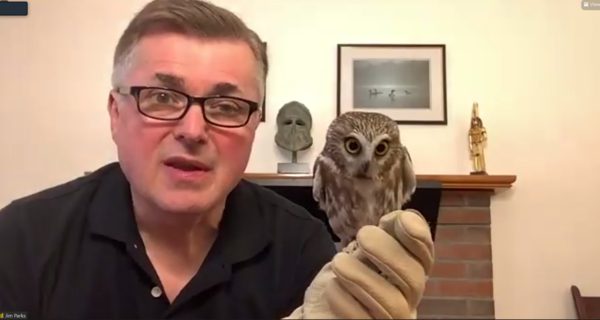By Amelia Tarallo
Hometown Weekly Staff
Have you ever looked up in the sky at night and spotted a bird flying? Have you ever gone outside and heard a bird noise you didn’t recognize? In both situations, you more than likely were in proximity of an owl. For many of us, catching an in-person glimpse (or sound) of owls is a rare occurrence. Luckily, the Walpole Public Library was happy to host a program to remedy the situation. On Wednesday, February 17, patrons logged on to Zoom to see Wingmasters presentation, "World of Owls," and learn about these mysterious birds.
The program began with a twenty-minute introductory video about some of the owls Wingmasters Jim Parks takes care of every day. The video included information about their special qualities, what sets them apart from other birds, and common misconceptions about owls. After the video, Parks joined the virtual audience and answered any questions people had about the birds.
Many of the kids used the chat feature on the video call to type out their questions, while Children’s Librarian Kara Dean served as a moderator. One child inquired how owls manage to fly silently, referencing a fact from the informational video. “I’m going to just show you two feathers, first of all. This is a feather from the fastest animal in the world, which is a peregrine falcon. Now let's see what happens when I move this one feather. In fact, if you can hear this sound right now, raise your hand,” Parks began as he waved a feather in the air. “Now, this is a noisy feather.”
Parks took out a different feather before whipping it through the air. Parks explained that there were three reasons owls could fly quietly: they have very soft feathers, a velvet-like feel to them, and fibria. Combined, these three qualities allow owls to fly silently through the night sky. Another kid asked what the smallest owl is, and Parks quickly explained that the elf owl, which lives in the desert, is the smallest.
After answering a few more questions, Parks introduced his audience to a live owl. Faces in the audience lit up as they caught their first glimpse of the tiny northern saw-whet owl perched on Parks’ hand. Parks highlighted how the owl turns her head. “In a second, she’ll show you the total back of her head. But notice what’s not happening. Her body’s not moving. It’s her head that’s turning. It looks unusual, but it’s not special,” said Parks. He continued to explain that birds cannot move their eyes. Owls cope by moving their heads instead.
By the time the program ended, Parks had answered over a dozen questions about owls. Moving the program to Zoom had not dampened the curiosity of the children attending. Instead, some remarked in the chat about going to the library to pick up a book about birds. Others, meanwhile, left feeling excited to have seen a saw-whet owl. If they weren’t already doing so before, these kids will definitely be keeping their eyes out for these wonderful birds.



















